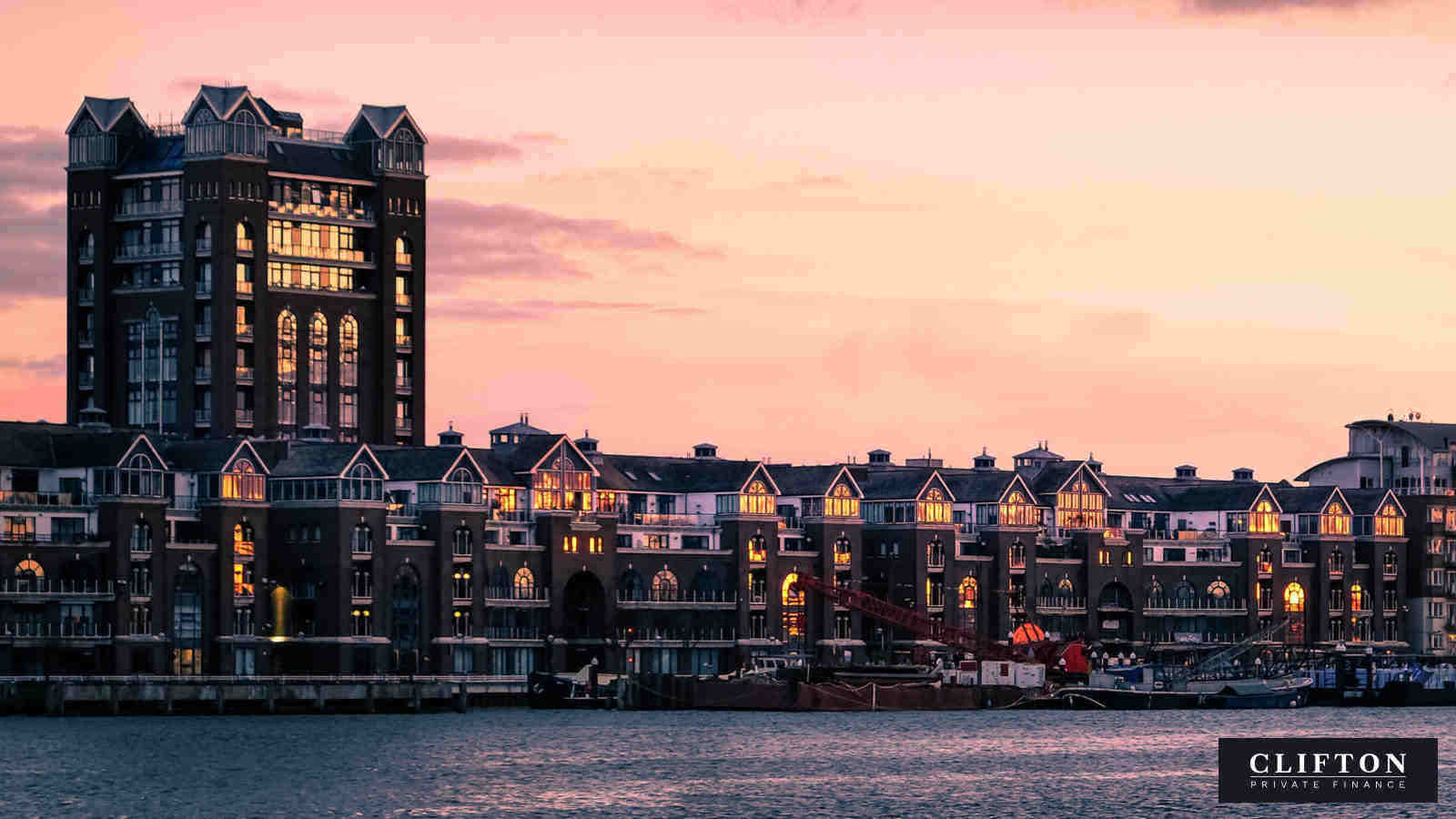Categories
How to Get Finance to Buy an Uninhabitable Property

Can you get a mortgage on an uninhabitable property? Before you start looking for finance, there are a few things you should know.
Written by Sam Hodgson
It’s the bargain of the century - a wreck which could be your dream home. Or it’s a profitable "doer-upper" which you could renovate and rent out or fix and sell.
Here’s the catch: the reason that scores of other buyers haven’t beaten you to the sale is that the property is deemed uninhabitable by mortgage lenders.
And even though you’re planning to do the house renovations before you move in, let it out, or sell it – you can’t get a mortgage on an uninhabitable property.
Find a Bridge Loan for an Uninhabitable Property
Get started with our calculator

Contents:
What's the Definition of an Uninhabitable Property?
Can I Get a Mortgage on an Uninhabitable Property?
What Might Make a Property Unmortgageable?
Signs That a Property Might be Unmortgageable
How Do I Apply for a Bridging Loan?
Getting a Mortgage on Uninhabitable Property: What's the Definition of 'Uninhabitable'?
An estate agent might describe a property as "in need of work." But uninhabitable goes beyond "tired" or "needing some TLC."
The most basic requirements for a property to be habitable (suitable for living in) are:
- It’s watertight – the roof is in good repair
- It has a basic kitchen
- It has a functional indoor bathroom (with inside toilet)
In addition, most mortgage lenders will require:
- Electricity and central heating
- The property is secure
- It’s free of refuse and pests
The reasoning is that a property that isn’t ready to be lived in (by a buyer or a tenant) will be difficult for a mortgage lender to sell at short notice if, for any reason, the whole project goes pear-shaped and they need to call in their loan.
Can I Get a Mortgage on an Uninhabitable Property?
Getting a mortgage on an uninhabitable property can be challenging because lenders typically prefer to finance properties that are in good condition and can be occupied immediately.
In many cases, buildings that are considered uninhabitable may have structural issues, safety hazards, or code violations that need to be addressed before they can be considered safe and habitable.
Mortgages are typically regulated, so when you buy a property, it will usually be used as collateral for the mortgage. This means that if you are unable to keep up with your mortgage payments, the lender has the right to repossess your property and sell it to recoup their losses.
This is a common practice that helps lower the risk for the lender. In many cases, securing a loan will allow you lower interest rates and can boost your borrowing amount.
However, if a property is considered uninhabitable, its value may be much lower than that of a move-in-ready property.
Lenders are hesitant to lend against a property with lower collateral value because it may not cover the loan amount if the borrower does default on their mortgage payments.
That being said, not all uninhabitable properties are unmortgageable full stop. It is possible to get a mortgage on an uninhabitable property if you're planning to refurbish the property to make it liveable.
What Might Make a Property Unmortgageable?
There are additional issues that might make a property unmortgageable (though not technically uninhabitable):
- Properties with more than one kitchen (that are a single residence, not intended as a multi-occupancy rental). Mortgage lenders will be concerned you may let out part of the dwelling, which would make it difficult to get vacant possession if they need to reclaim it.
- A flat in a block above six storeys
- A flat in a block with no lift
- The type of exterior cladding on a block of flats, particularly post-Grenfell
- The type of concrete or construction, particularly on former local-authority housing (read how we got bridging finance on a problematic style of Cornish housing)
- A flat above commercial premises (though lenders are becoming more flexible about this, particularly in high street renovations)
- Properties sold at auction may be unmortgageable. This is not only because of the condition they're in but also because of the tight turnaround time required for payment. Payment needs to be completed within 28 days - much faster than most mortgage lenders can complete a transaction.
Signs That a Property May Be Unmortgageable: What to Look Out For
- Penetrating damp = structural damage / an unsound roof
- Cracks or bulging in brickwork/leaning chimney stacks = signs of structural movement
- Sagging floor or ceiling = joists may need replacing
- Damaged bathroom fittings or kitchen work surfaces (preventing hygienic food preparation)
- Rotten or broken windows
- Signs of pests or vermin
So, How Can I Finance an Uninhabitable Property Purchase?
There are a few ways you can finance the purchase of an uninhabitable property. We've already covered why it may be difficult to obtain a traditional mortgage, but in many cases, once you've completed the necessary refurbishments to the property, it can be possible to refinance to a mortgage.
The main option available to help you fund the improvements needed to get an uninhabitable property ship-shape is a renovation mortgage (also known as a refurbishment bridging loan or renovation loan).
Can I Get a Mortgage Worth More Than the Property?
A renovation mortgage is designed to help homebuyers or homeowners finance both the purchase of a property and the cost of renovations or repairs needed to make the property habitable or improve its condition.
The term 'renovation mortgage' typically means a bridging loan that can be refinanced onto a mortgage once the necessary refurbishments to make it habitable are complete. This finance option can allow you to borrow more than the house is worth to fund any property changes.
These loans are especially useful when you're interested in buying a property that requires significant work or upgrades.
Bridging loans have a simpler application process than a mortgage because they are short-term and rely on an exit strategy for eligibility instead of rental income or salary.
However, in order to secure a renovation loan, you'll need a decision-in-principle from the mortgage lender to show that you have a solid way of paying back the bridging loan.
You may need detailed renovation plans and cost estimates for the project. If the mortgage lender is confident that your renovation plans can be completed feasibly within the timeframe and you meet the other eligibility requirements, you will be approved for the mortgage.
After which, you can approach the bridging lender, which should be more straightforward once you have a decision-in-principle for a mortgage, as that proves you have an exit strategy in place.
This process can be complicated when navigating it alone, but complex funding solutions can be made easier with the help of an expert. At Clifton Private Finance, we have a highly qualified team who can guide you through your application and advise you on the best route to take.
Working with a specialist broker can ensure a smoother and more efficient application process and increase your chances of approval.

Alternative Finance Options to Buy an Uninhabitable Property
If you can’t get a mortgage on a property immediately, there are alternative short-term borrowing options available to you, which can fund your purchase and renovations until it's in a condition to be refinanced on a mortgage.
A renovation loan is designed to provide financing for property refurbishment or renovation projects. In the past, short term bridging finance had been regarded as unaffordable. However, this finance option has seen more competitive interest rates and flexible terms in the past ten years.
Unlike mortgages, which are priced for the long-term (usually 20 or 25 years) and which carry penalties if you cancel them within the first couple of years, bridge finance is intended to be short term. It can be a useful option to cover the work required to get "uninhabitable" properties to mortgageable condition.
See similar: The 8 Best Ways to Finance Home Improvements & How to get a Bridging Loan to Buy, Refurbish & Sell a House
In the video below, our Head of Bridging, Sam O'Neill, covers the need-to-know information about bridging loans and how they work.
And while you're here, check out our full guide on bridging finance.
See the latest market news below.
2025 Bridging Market Update
The bridging market has had quite a transformation in the past few years. With rates starting at 0.55% per month, the costs aren’t dissimilar from those of a mortgage, and the combination of flexibility, quick turnaround time and less stringent eligibility criteria has led to bridging finance growing in popularity.
It’s now seen as a product in its own right instead of an expensive alternative to long-term finance.
Our finance brokers are seeing more repeat clients, particularly investors who have turned their attention to property flipping considering the slim profit margins the buy to let market has been seeing. HMO conversions have also grown in popularity amid more rigid rental legislation.
According to our team of advisers, a high volume of first-time borrowers already have an understanding of bridging loans before approaching us, showing that bridging is becoming more recognised in the industry.
As bridging finance becomes more mainstream, lenders are reviewing and reducing rates more frequently, offering more flexibility around costs.
Regulated Bridging Finance
If you’re buying the property to live in or if the property you’re securing the bridging loan against is your home, this will be a regulated loan.
It will be subject to the requirements of the Financial Conduct Authority in order to protect your home:
- The maximum period it can run for is 12 months (unless it’s clear that you need a limited extension to achieve your refinancing).
- The interest will be "rolled up" into the total loan amount rather than paid monthly (which reduces the amount you can borrow).
Unregulated Bridging Finance
If you’re buying the property as an investment and it’s not secured against your home or the home of a family member the loan will be unregulated.
This means that:
- You can choose to "service" the loan by paying the interest monthly.
Recent refurbishment finance rates we've secured for clients:
Rates from: Downsizing/Upsizing Releasing Funds From Your Home Short-Term Lease Finance Auction Purchase As at 17th January 2025 Rates from: Light & Heavy Refurb Finance For Unmortgageable Properties Land Purchase with planning As at 17th January 2025 Rates from: Up to 80% LTV Minimum Loan £500k Minimum net income £100k As at 17th January 2025 Thank You for your interest - please complete the form below and a member of our team will be in contact.Residential
Buying Before Selling?
0.55% pm
Development & Refurb
Fast Finance
0.55% pm
Residential
Large Bridging Loans
0.55% pm
Contact Us
And find out more with our Bridging Loan FAQs.
How Much Can I Borrow?
Get a quick estimate of your loan eligibility:
How Do I Apply for a Renovation Loan?
Our specialist finance brokers are familiar with all the loan products on the market and will submit your application to the most appropriate lender for you. Working with an experienced finance broker can give you an advantage in your search for the right finance product.
It is common for many private and specialist lenders to operate exclusively using finance brokers. While some banks may be accessible without the aid of a broker, many of them are smaller and more difficult to find than high street lenders.
At Clifton Private Finance, not only do we have long-standing relationships with a wide range of lenders, but we can also help you present your application in the best possible light.
We can help increase your chances of being accepted and source the financing you need to buy the property you have your eye on.
To see what we can do for you, call us on 0117 959 5094 or book a free consultation below.










